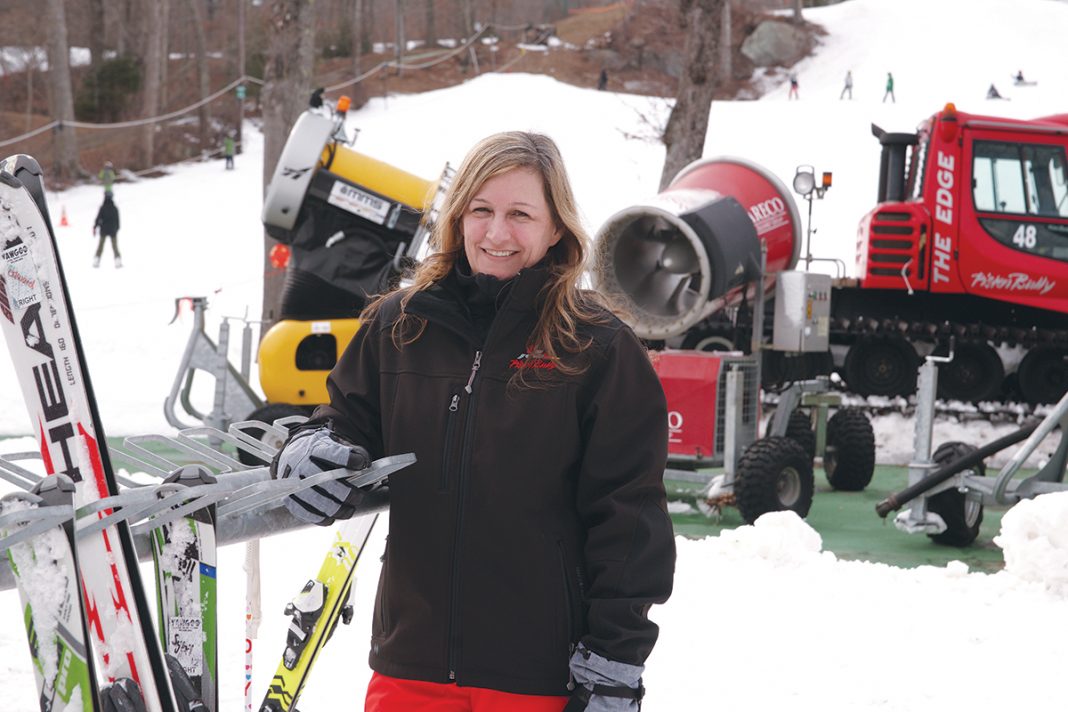Originally established as a ski park in Exeter in 1965, Yawgoo Valley celebrates all that the Ocean State has to offer tourists and locals – in winter and summer. Tracy Hartman, a second-generation general manager and CEO, said when her family bought the business in 1980, Rhode Island ski parks were popular and plentiful. Grassroots research website New England Lost Ski Area Project lists four now-defunct Rhode Island ski resorts – Diamond Hill and Ski Valley (Cumberland), Neutaconkanut Hill (Providence) and Pine Top (West Greenwich).
But Yawgoo Valley has survived by diversifying its offerings, expanding in 1991 to include a water park. In 1995, a snow-tubing hill opened as another avenue for winter income.
“As time went on, we needed an additional draw,” said Hartman, who remembered her father thinking the water park and subsequent snow-tubing hill would “sustain” the family-owned business.
“If you offset yearly expenses with three additional months of income,” she added, “you can grow the business or, hopefully, have more of a profit.”
Yawgoo, however, is more anomaly than rule among tourist attractions and related businesses in being able to bridge the seasonal divide in the Ocean State, where winter can present formidable challenges to attracting visitors. And even Yawgoo closes for a couple of months in the spring for maintenance.
“The weather that makes Rhode Island a destination in the summer makes it a nondestination in the winter,” said Trudy Coxe, CEO and executive director of the Preservation Society of Newport County.
But that doesn’t keep some businesses and nonprofits from trying, including Coxe’s Preservation Society, and holding out hope state tourism officials can help find ways to make the Ocean State more of a year-round tourism destination.
[caption id="attachment_198626" align="aligncenter" width="640"]
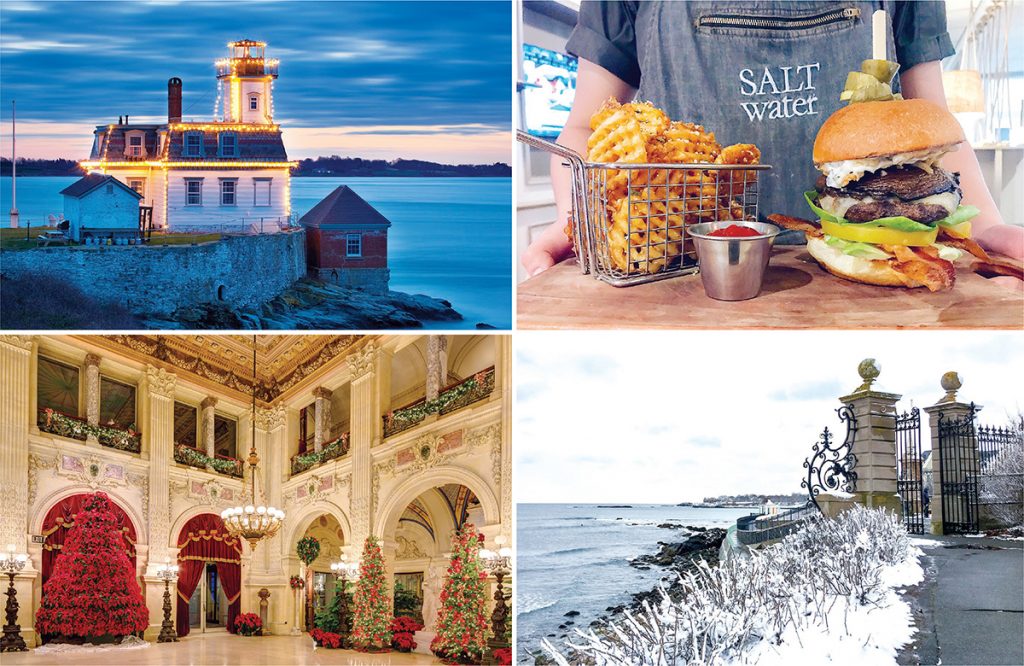
NEWPORT ATTRACTIONS: Clockwise from top left: The sun sets on Rose Island Lighthouse, which is lit up for the holidays; a sample of the mega truffle mushroom burger and waffle fries at Saltwater at Newport Harbor Hotel; a winter view from the Newport Cliff Walk; and Great Hall at The Breakers decorated for Christmas. / COURTESY DISCOVER NEWPORT & PRESERVATION SOCIETY OF NEWPORT COUNTY[/caption]
MULTISEASONAL
The nonprofit keeps four of Newport’s 10 mansions it manages open throughout the winter. Originally not inhabited by their owners during those months, the society “has fun” interpreting holiday celebrations at The Elms, Rosecliff, Marble House and The Breakers, said Coxe.
The organization since 2001 has gradually opened more of the mansions year-round. From 2001 to 2005, one house was kept open daily year-round, while others opened on winter weekends. Since 2005, The Breakers has remained open daily year-round, with two others rotating weekends and holidays. In January 2016 the society moved to keep two additional houses open daily year-round – The Elms and Marble House. Rosecliff was moved from a seasonal schedule to open daily year-round in January 2017 but still closes periodically for weeks at a time.
Offseason attendance at the mansions – from Labor Day through March 31 – has steadily increased in recent years, from 38 percent of the year-round total in 2014 to 43 percent in 2016, the most recent year available.
While “January, February, March are not the most beautiful times to be here … we were able to cover our expenses,” Coxe said.
Coxe thinks winter visitation has increased because of the “real big effort” put into decorating for the holiday season.
She believes a tour added in January 2017 making public a previously less-visible aspect of life at The Breakers is also responsible for increases. Called “Beneath the Breakers,” the tour takes guests into the basement and boiler room.
“There are a lot of people who might not be as interested in a 1630 tapestry [as in] how the plumbing worked,” said Coxe of the added programming, “especially repeat visitors.”
Travel + Leisure has twice listed Rhode Island cities as top choices for winter travel. In November 2015, Providence was ranked No. 22 of 35 cities in their America’s Best Cities for Winter Travel – a list topped by San Juan, Puerto Rico (No. 1), and Honolulu (No. 2). Three years later, a January 2018 Best Places to Travel in February ranking included Newport.
[caption id="attachment_198624" align="aligncenter" width="640"]
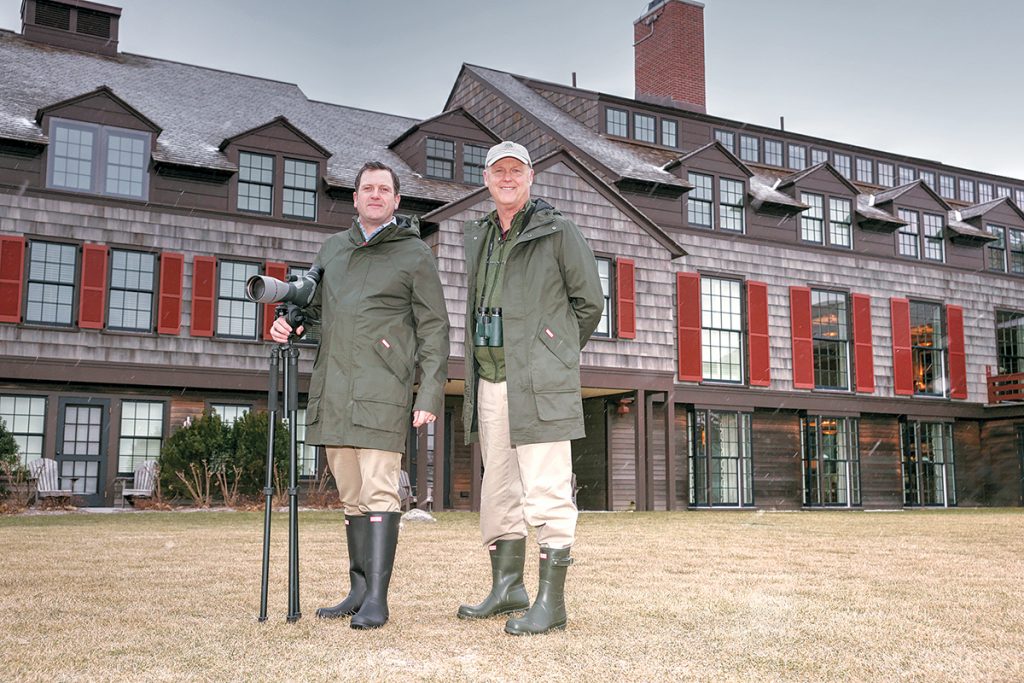
PARTNERSHIP: Above, Mark Bullinger, right, in-house naturalist, and General Manager Simon Dewar on the grounds of the Weekapaug Inn on the shore of Quonochontaug Pond in Westerly. / PBN PHOTO/BRIAN MCDONALD[/caption]
One of the businesses doing its best to take advantage of such rankings is the Weekapaug Inn. A strictly seasonal operation for more than a century, the Westerly hotel in 2012 began accepting reservations year-round.
First opened in 1899, it was rebuilt after the 1938 hurricane. Until a five-year renovation commenced in 2007, it lacked heat, air conditioning and was “closed down, boarded up and pipes cleared” each fall, said Simon Dewar, general manager.
Instead of giving in to winter’s challenges, the inn now works with an in-house naturalist, Mark Bullinger, to design nature-focused programming to attract visitors in the offseason, such as a January Full Moon, Super Moon, Blue Moon viewing party that drew more than 80 guests for a champagne toast.
The inn has also implemented South Coast Off the Beaten Trail tours, trips to Block Island and birding outings to view migratory species.
“We are gradually educating and spreading the word about how wonderful, beautiful and serene it can be on these cold winter days,” Dewar said.
Like others in the tourism industry, Bullinger believes a negative public perception among travelers of the state’s winter climate still keeps visitors away.
[caption id="attachment_198625" align="alignright" width="200"]
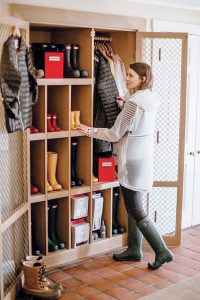
Sporting boots and jackets are available for guests to borrow at Weekapaug Inn through a partnership with the Hunter Boots lending closet, providing boots and wind- and waterproof apparel to the inn for free. / COURTESY WEEKAPAUG INN[/caption]
One of the strategies Weekapaug has implemented to counteract that is a plethora of partnerships with brand-name companies. Among its amenities are Tesla charging stations, two BMWs for guest use and a Hunter Boots lending closet featuring boots, and wind- and waterproof apparel provided to the inn for free. In addition, Weekapaug guests are given a 15 percent discount toward future Hunter purchases.
While the inn would not share reservation data, a spokesperson said January occupancy increased by single-digit percentages in 2013, 2014 and 2015 then by double-digit percentages between 2016 and 2018.
Providence’s Roger Williams Park Zoo is also trying to change the perception that it is not a year-round destination.
“People view us more as a spring, summer and fall activity,” said Dr. Jeremy Goodman, the zoo’s executive director, “and that is something we’re trying to change.”
Only closing three days out of the entire year – Thanksgiving Day, Christmas Eve and Christmas Day – from Jan. 1 to Feb. 28 the zoo offers half-price admission during what it calls its Winter Wonder Days – a more than 5-year-old program. In addition, the zoo often offers free admission on Black Friday – the unofficial start of the winter season.
Zoo data reflects seasonal dips from 2012 through 2017. On average, over those six years there were 17,792 visitors in November, falling to 8,848 in December and 7,582 in January (the lowest point in the year). February sees average visitation almost double to 14,951 and it continues to climb to 18,318 in March. The months with the highest average attendance in that period were August (86,563) followed closely by July (79,484).
Of the winter performance, Goodman said: “Discounted admission certainly helps encourage people.”
[caption id="attachment_198621" align="alignleft" width="300"]

ACTIVE ANIMALS: The colder months are the best time to view the red panda at Roger Williams Park Zoo. / COURTESY ROGER WILLIAMS PARK ZOO[/caption]
The colder months are also the best time to view the snow leopards, red panda and bison, he said.
These species “are really active in the winter,” said Goodman, “[whereas] in the heat of the summer they stay in the back of the exhibit, in the shade.”
Goodman hopes a soon-to-open rainforest-themed exhibit full of brightly colored animals from vibrant ecosystems – a tropical respite from walking outside in the Rhode Island cold – will increase winter visitation.
WINTER TOLL
R.I. Department of Labor and Training data show winter’s effect on seasonal employers in the state.
The department only recently started analyzing seasonal closures and has data for winter 2016 to summer 2017. During that time, 630 employers in retail, transportation, and accommodation and food services had a total winter employment of 6,046 between November 2016 and April 2017 compared with summer employment of 15,202 between May and September 2017. Summer employment for those 630 firms was more than double the total winter employment.
The industry with the most seasonal employers was accommodation and food services with 487 – employing 13,279 individuals over the summer and 5,411 in the winter.
Per RIDLT data, most seasonal Rhode Island employers were in Washington County (230) while Newport County had 136 and Providence County had 111.
Perhaps nowhere in Rhode Island is the difference between winter and summer tourism starker than on Block Island.
Tens of thousands of tourists flock to New Shoreham, the island’s official designation, each summer.
Come late October, however, most of the island’s estimated 110 seasonal businesses have closed.
And once the ferry schedule is shortened, “getting to and from Block Island can become a challenge,” admitted year-round resident and Island Bound Bookstore co-owner Susan Bush.
Limited accessibility, she said, “seriously” impacts her ability to conduct business in the offseason. Therefore, many of her customers between November and March are fellow year-round Block Island residents.
Bush, who purchased the shop with her sister in 2016, said: “We stay open more as a community service than to bring in lots of sales. … The population is too small to be a viable business open seven days a week” in the winter.
Bush would like to see New Shoreham become a “winter destination.” But Jessica K. Willi, Block Island Tourism Council executive director, acknowledged the chance of that happening “is pretty slim.”
Willi listed numerous service businesses that support a year-round island economy – a gas station, a grocery store, a hardware store – but said “there aren’t enough people visiting to keep multiple [tourism-related] businesses open” in the winter.
[caption id="attachment_198622" align="alignright" width="300"]
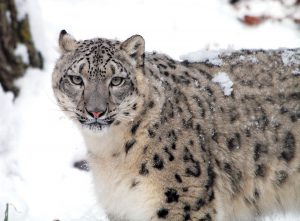
The snow leopard at Roger Williams Park Zoo is more active during the winter than in the summer. / COURTESY ROGER WILLIAMS PARK ZOO[/caption]
Geographic seclusion and an “idyllic, laid-back community” are among the reasons people seek out Block Island, she added.
If the island’s tranquil winter atmosphere transformed into something akin to the “Jersey Shore” due to increased year-round tourism, landowners would be unhappy, she said.
While Block Island may choose to remain a seasonal destination, most Rhode Island businesses and communities would welcome increased year-round tourism.
When the weather is good locally, The Newport Tent Co. often rents its tents to tourism-related events.
But owner Bill Corcoran gets through the winter months by finding business as far south as Florida and the Caribbean.
Casting a wider net during the winter helps keep his Newport business alive, he said, “but it would be nice to develop more winter [business] in Rhode Island.”
Jobs between November and March – including the Special Olympics’ Polar Bear Plunge, New Year’s parties and St. Patrick’s Day festival – account for roughly 10 percent of Corcoran’s yearly business.
Corcoran also rents tent heaters to construction companies to keep workers warm while erecting homes with spring completion deadlines. He said it is not a big source of business, “[but] there’s no real big source [in the winter].”
[caption id="attachment_198623" align="alignright" width="300"]
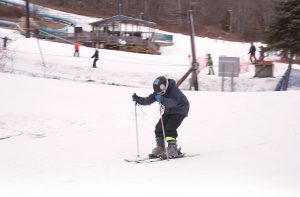
SLOPE RUN: A skier enjoys the slopes at Yawgoo Valley in Exeter. CEO Tracy Hartman says the park sees between 17,000 and 22,000 skiers in any given year. / PBN PHOTO/BRIAN MCDONALD[/caption]
CULTURAL TOURISM
For years, Heritage Harbor Foundation President Patrick T. Conley championed a project to create a museum in Providence dedicated to Rhode Island history.
The project failed to attract enough financing, but the idea to better capitalize on Rhode Island’s culture and history to woo more visitors remains viable, he says.
Rhode Island is one of the 13 original colonies, the birthplace of religious freedom in the United States and played a founding role in the urbanization of commerce during the Industrial Revolution, said Conley.
He sees the lack of a state-level history museum a “real shortcoming” for the tourism industry, on which the state is heavily reliant.
“The potential is great,” he said, of luring visitors to historic sites that include Portsmouth’s Butts Hill and a Woonsocket-based Industrial Trail akin to the Providence Independence Trail.
Others feel the same. In early February, U.S. Sens. Brian Schatz, D-Hawaii, Bill Cassidy, R-La., and Jack F. Reed, D-R.I., introduced the Explore America Act – legislation designed to promote cultural-heritage tourism by creating partnerships between the National Park Service and local communities that might involve grants or technical assistance to local attractions.
In a statement, Reed said the bill would “stimulate local economies and create jobs in the tourism industry.”
R.I. Commerce Corp. Chief Marketing Officer Lara Salamano said Rhode Island’s “rich history” is valued by the state’s tourism-marketing department and “frequently incorporate[d]” into tourism campaigns.
Unlike some businesses, Salamano does not think there is a negative public perception of winter in Rhode Island so much as a lack of awareness about what the state has to offer. Gaining more tourism momentum for the winter, she said, is a “marketing” issue the state is eager to address.
Jesse Saglio, Commerce RI’s new president and chief operating officer, promotes the use of state-sponsored microloans to strengthen and elongate the tourism season for related small businesses.
“Access to capital is important for businesses like that,” he said. “Helping those businesses be more prosperous during their heady times also helps them get through their lean times – that’s always going to be the case in a weather[-dependent] environment.”
[caption id="attachment_198618" align="alignleft" width="300"]
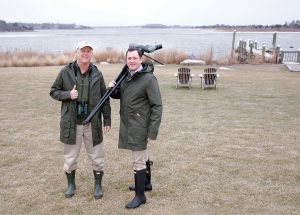
WATERPROOF: Simon Dewar, right, general manager of the Weekapaug Inn in Westerly, and in-house naturalist Mark Bullinger wear waterproof apparel, including boots, available to guests through the inn’s Hunter Boots lending closet. / PBN PHOTO/BRIAN MCDONALD[/caption]
STATE SUPPORT
Whether it is through more marketing or other help, some businesses would like to see the state do more to boost year-round tourism.
“Rhode Island, in general, could do better in terms of events going on during the slower part of the year and giving reasons for people to come here,” said the Weekapaug Inn’s Bullinger. “It would be great if there were more statewide initiatives to put it on the map in the wintertime.”
Echoing him, The Newport Tent Co.’s Corcoran said weather alone is not a deterrent to growing tourism, citing events such as Newport’s Winter Festival – featuring a chili cookoff, ice sculpting demonstration and polo match on the beach – as vital to economic sustainability.
“I’ll go up to Montreal for Winter Carnival and it’s 10 degrees out and the place is packed,” he said.
In the past two years, Discover Newport has launched the Burger Bender competition in February and Newport Wellness Week, a weeklong health and wellness awareness event in January.
WaterFire Providence receives an annual $375,000 Rhode Island Designated Service grant and annually attracts an estimated 1 million people for lightings typically held from May to November.
While Managing Director Peter Mello believes a statewide, state-sponsored offseason event would be an “economic catalyst” for Ocean State tourism, he knows it would be a “challenge” for WaterFire to participate, for the same reasons there aren’t more offseason lightings already in its schedule.
Salamano does see potential for Rhode Island to take advantage of its reputation as a “music capital” and said a shoulder-season music festival deserves a “deeper” investigation.
She hopes to draw on student talent to create an artist base for a potential winter music festival.
“Bob Dylan went electric in Newport. The Talking Heads went to [Rhode Island School of Design]. We’ve always attracted a certain rebellious, creative and free-wheeling sort,” she said.
In terms of previously laid groundwork, Salamano cited the Newport Jazz Festival, the Bold Point Park concert series and the Newport Folk Festival, which she added “sells out before they announce a single artist.”
Back at Yawgoo, Hartman was hoping to see a spike in business from the recently completed 2018 Winter Olympics in South Korea.
She would not share specific data but said attendance at each of the park’s attractions has fluctuated over the years. In any given year, she said, there are between 12,000 and 16,000 water park visitors, 17,000 to 22,000 skiers and 12,000 to 20,000 snow tubers.
“We’re still here, so there’s got to be something working,” said Hartman.

